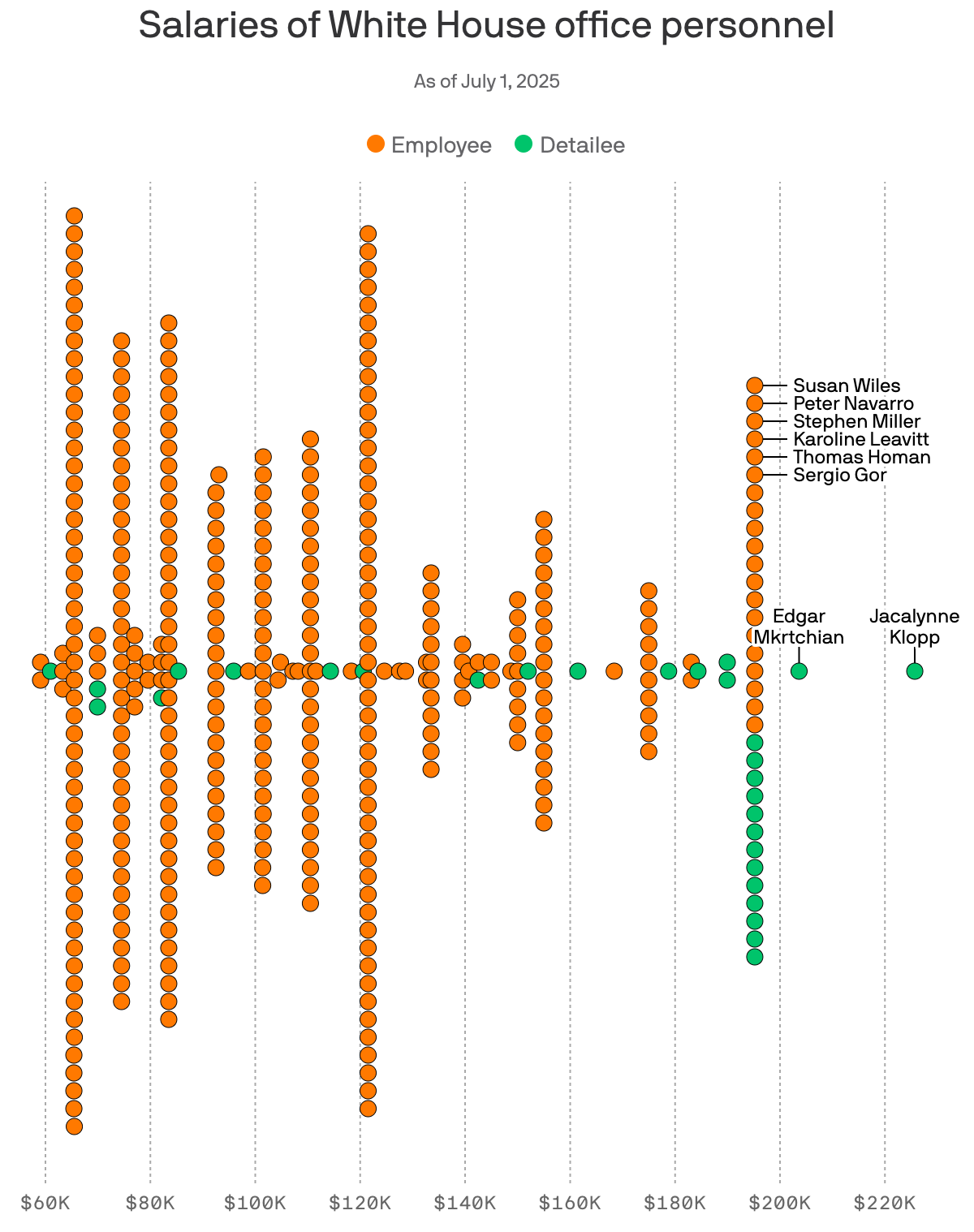The annual release of White House staff salaries offers a crucial window into the financial architecture and operational costs of the U.S. Executive Branch, providing valuable insights into the Trump Administration’s personnel structure. This comprehensive report, submitted to Congress, details the compensation of over 400 individuals working within the West Wing, from high-ranking presidential advisors to various support and junior aides. Such disclosures are fundamental to government transparency, allowing the public to understand how taxpayer dollars are allocated within the nation’s highest office and who precisely is compensated for their service to the White House.
Among the multitude of dedicated professionals, the report highlights the highest-paid individuals, drawing attention to their significant roles and compensation. Jacalynne B. Klopp leads this elite group as the top-paid staffer, earning a substantial $225,700 for her advisory role within the White House. Following closely is associate counsel Edgar Mkrtchian, whose salary is reported at $203,645. These figures underscore the considerable financial commitment to key legal and advisory positions, reflecting the critical responsibilities these individuals undertake within the heart of the Trump Administration.
Further examination of the salary data reveals that a notable cohort of 33 employees command annual salaries of $195,200. This group includes several prominent figures who play pivotal roles in the daily operations and strategic direction of the government. Among them are Susie Wiles, serving as chief of staff; Karoline Leavitt, the press secretary; Tom Homan, the border czar; Stephen Miller, assistant to the president and deputy chief of staff for policy and homeland security adviser; Sergio Gor, assistant to the president and director of the Office of Presidential Personnel; and Peter Navarro, assistant to the president and senior counselor for trade and manufacturing. Their inclusion at this top tier highlights their integral contributions to policy implementation and strategic initiatives under the Trump Administration.
Beyond the uppermost echelons, the report meticulously breaks down the salary ranges for various tiers of White House personnel, illustrating the structured compensation framework. Most deputy assistants, for instance, fall within a salary bracket of $155,000 to $175,000, reflecting their elevated responsibilities and expertise. Special assistants typically earn between $121,500 and $150,000, signifying their crucial support roles and specialized contributions across different departments within the Executive Branch. This tiered system provides a clear picture of the professional hierarchy and the corresponding remuneration.
The compensation spectrum extends further to include other vital components of the White House staff. Presidential speechwriters, critical for shaping the administration’s message and public discourse, typically command salaries ranging from $92,500 to $121,500. Moreover, the report identifies a significant segment of the staff, comprising 108 employees, who earn between $59,000 and $80,000. This broad distribution of salaries demonstrates the diverse range of skills and experience required to manage the complex operations of the West Wing, from senior policy formulation to essential administrative functions.
An intriguing aspect of the released data is the identification of eight employees who are listed with no direct salary from the White House. These individuals, while serving in critical capacities, are compensated through their respective agencies, illustrating the multifaceted financial arrangements within the broader federal government. Notable examples include Secretary of State Marco Rubio and a ‘crypto czar’ David Sacks, whose salaries originate from outside the immediate White House payroll. This detail offers an important nuance to understanding the overall personnel structure and funding mechanisms of the Trump Administration and the Executive Branch at large.
Ultimately, this annual disclosure serves as a vital instrument of government transparency, offering the public an unprecedented and detailed glimpse into the operational costs and the intricate personnel structure of the U.S. Executive Branch. It not only illuminates how the White House staff is compensated but also indirectly reflects the priorities and focus areas of the current administration through its allocation of high-level positions. While the White House did not provide comment on the report, its publication remains a crucial public record, reinforcing accountability and fostering informed civic engagement regarding the workings of the federal government.
Discover more from The Time News
Subscribe to get the latest posts sent to your email.





